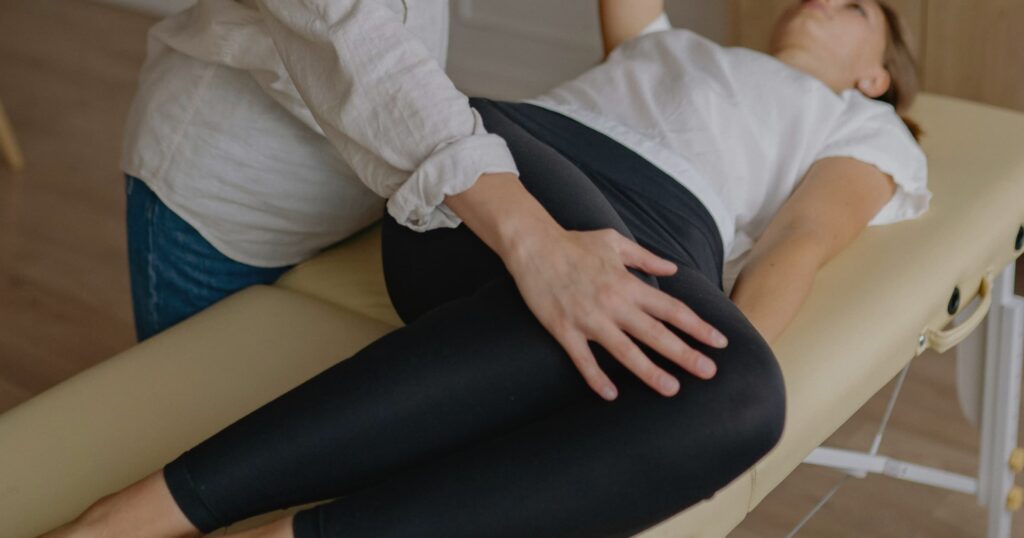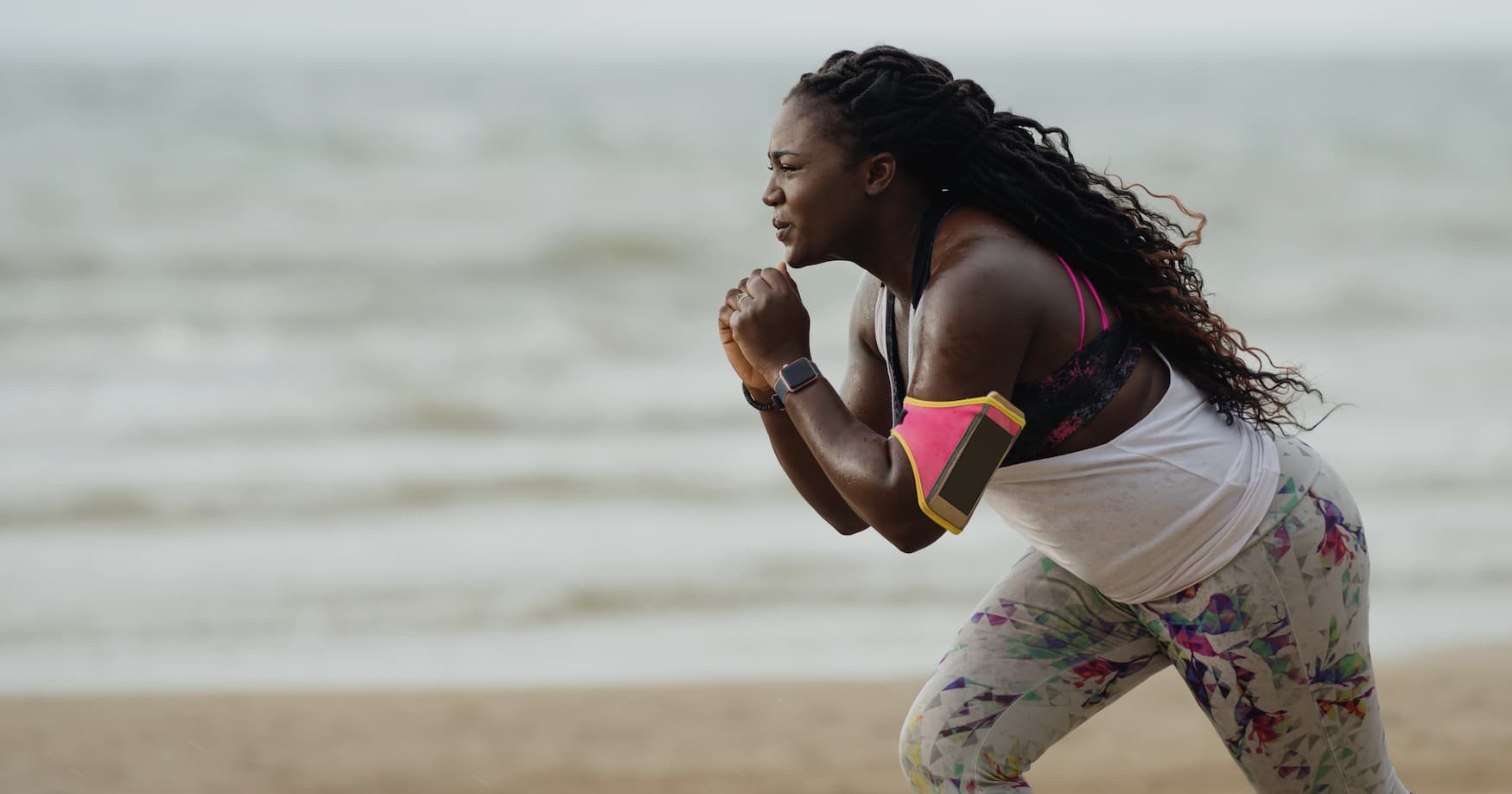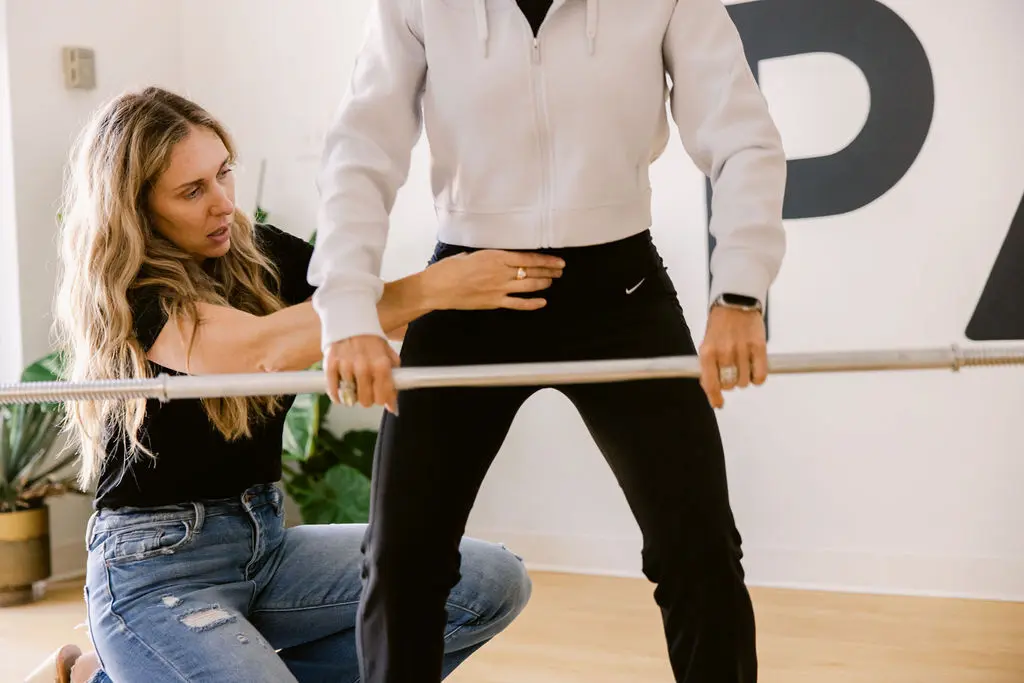Did you know that women who engage in physical activity face a staggering 177% higher risk of experiencing urinary incontinence compared to their sedentary counterparts? Before you consider retiring your running shoes, let’s explore how you can optimize your training for better pelvic floor health.
Understanding Your Body: A Quick Anatomy Overview
Our pelvic floor, along with our diaphragm, abdominal, and back muscles, plays a primary role in our core stabilization system (see our previous blog post highlighting the “Soda-Pop-Can” Model for more details).
The pelvic floor is the base of this system, working to provide stability and support to the rest of the body (including organs) during everyday tasks. The pelvic floor can also relax, aiding bowel and bladder function.
Maintaining this optimal length—meaning the ability to fully contract and fully relax—in our pelvic floor prepares us to activate fully during functional movements. Fortunately, we can train the pelvic floor muscles to improve their ability to voluntarily relax and contract in preparation for daily movements, bodily functions, and exercise.
Signs of Pelvic Floor Dysfunction in Athletes
Some common signs of pelvic floor dysfunction in athletes include:
- Hip, lower back, and knee pain
- Urinary incontinence (leakage)
- Urinary urgency (feeling like you need to urinate frequently)
- Heaviness or pressure in the pelvic region
- Coning or doming in the abdominal region
These symptoms are often more apparent when working out or running due to the added force being applied to the pelvic floor.
So, does everyone need pelvic floor training?
No, not necessarily. But, everybody should be aware of their pelvic floor and how it can impact their physical function, regardless of the activity they participate in. From an everyday walker to an Olympic athlete, a few key principles will help you optimize your pelvic floor health while being active.

Tips for Optimal Pelvic Floor Health
1. Breathe!
Your pelvic floor and diaphragm work opposite each other to facilitate your breath. Maintaining proper breath mechanics will facilitate optimal pelvic floor muscle movement and help maintain intra-abdominal pressure.
Intra-abdominal pressure is a steady-state pressure system that ultimately helps to manage the amount of force being applied to the pelvic floor.
It’s important to note that different types of athletes require different breathing patterns. How an Olympic weight lifter is trained to coordinate their breath might differ from how a runner is trained to use their breath. This concept is not a one-size-fits-all, so seeking professional guidance is key.
2. Stack ribs over hips
Keeping your ribs stacked over your pelvis allows your diaphragm, pelvic floor, and core to function most efficiently. This alignment allows for optimal respiratory function, increases lung capacity, and reduces strain on your spine and other joints.
Imagine how much this alone can benefit your athletic performance. Poor postural alignment disrupts the core stabilization system, increasing intra-abdominal pressure on the pelvic floor. As a result, symptoms—such as leakage, heaviness, or pain—can occur or worsen.
3. Relax your abdominal and glute muscles
Myth: Sucking in your tummy will help improve your posture. Sucking in your tummy causes increased tension and shortening of the abdominal muscle fibers, which in turn prevents them from being able to engage properly.
Do you think you have a strong core? Maybe that is actually tension that you are feeling. Abdominal tension (from “tummy gripping”) is another factor that increases intra-abdominal pressure, which produces more pressure on the pelvic floor.
With this muscular restriction and increased pressure, we lose strength and stability, and (in some cases) pelvic floor symptoms.
4. Strength training, in particular, single-leg loading
During running, we spend a lot of time in a single-leg stance, which requires a lot of pelvic and core stability and strength. That, in combination with the repetitive impact, puts a lot of stress on our lower body, including the pelvic floor.
Without the appropriate level of strength to withstand the high impact, you may notice worsening pelvic floor-related symptoms.
Do you notice your hip dropping or knee caving in when standing on one leg? If so, that is a sign that you need more pelvic stability, and running without it over time can result in an orthopedic injury, amongst other things.
5. Incorporate dynamic movement
Dynamics is the study of the relation between forces and motion of an object (or body). Given that description alone, dynamic exercises should be a part of your regular training routine to focus on applying forces to your body while it is in motion. These types of exercises should be programmed specific to your needs and what is required for your sport.
6. Train in multiple planes of movement
Most functional tasks require our bodies to move efficiently through multiple planes of movement. These planes involve moving side to side, forward and backward, and rotationally.
Training in all of these planes facilitates muscle strengthening, creates balance, and builds resilience to injury. Regardless of your sport, training in all directions can benefit your physical performance and overall health.
7. Add hills to your work out
Running uphill reduces stress on the pelvic floor. It’s a great way to gain strength and endurance while protecting your pelvic floor muscles. Consider adding hills to your training or running uphill and walking down as part of your warm-ups.
It’s important to build up and maintain a strong foundation to provide the support that’s needed during high-level sports activity and decrease the risk of injury or symptoms. The benefits of exercise far outweigh the risks, but you must train smartly.
We are here to keep you active in doing what you love. If you try these tips on your own and are still having issues, contact to schedule a pelvic floor consultation with one of our doctors of physical therapy.
Dr. Jillian Raglin and Dr. Alicia Keefe
References:
https://www.ncbi.nlm.nih.gov/pmc/articles/PMC10811036/#:~:text=Yet%20repetitive%20loading%20of%20the,such%20as%20running%20%5B9%5D. (1)
https://www.sciencedirect.com/science/article/pii/S1877065719301605
https://www.mdpi.com/1660-4601/20/8/5535
https://pubmed.ncbi.nlm.nih.gov/35094428







